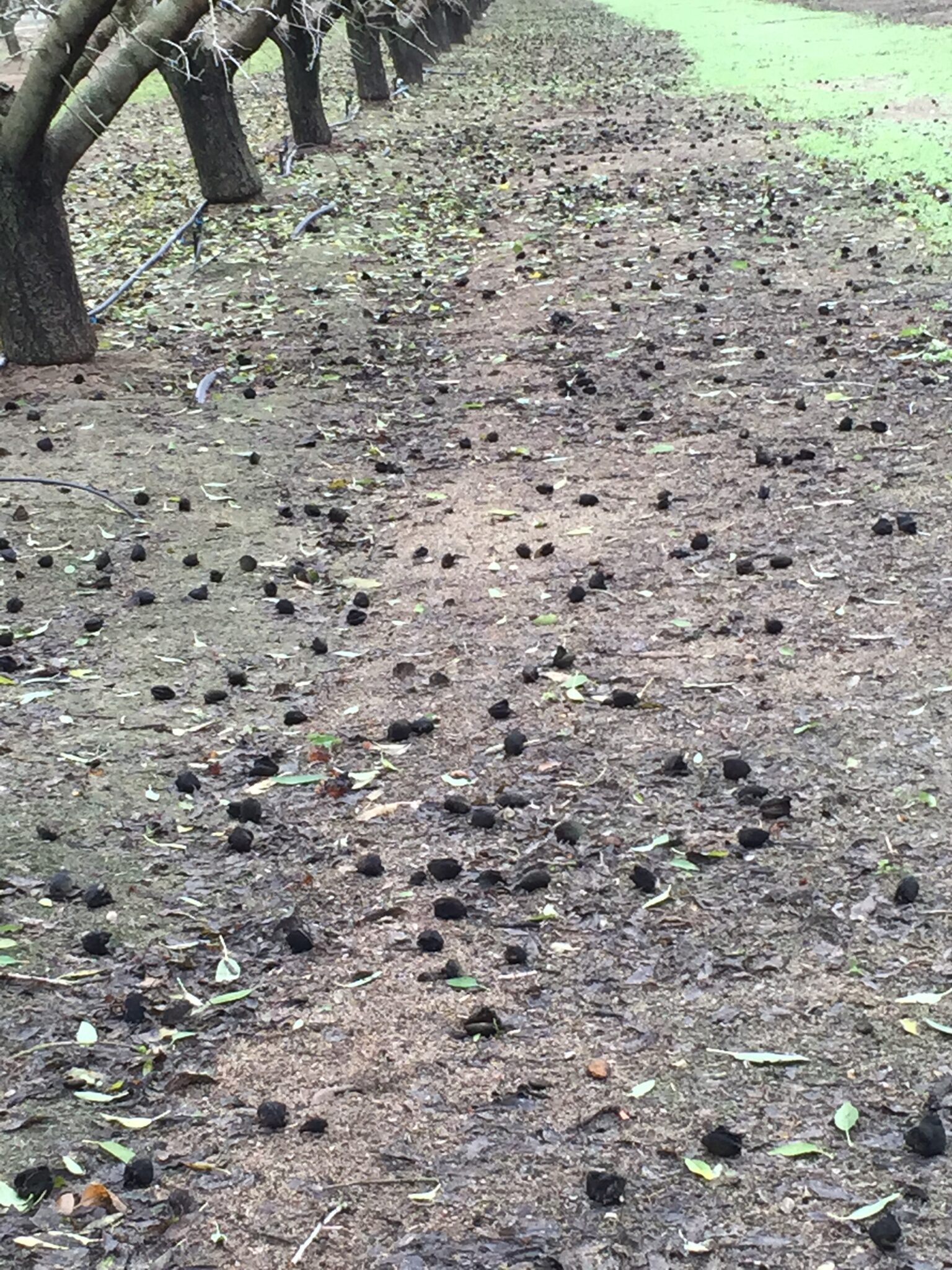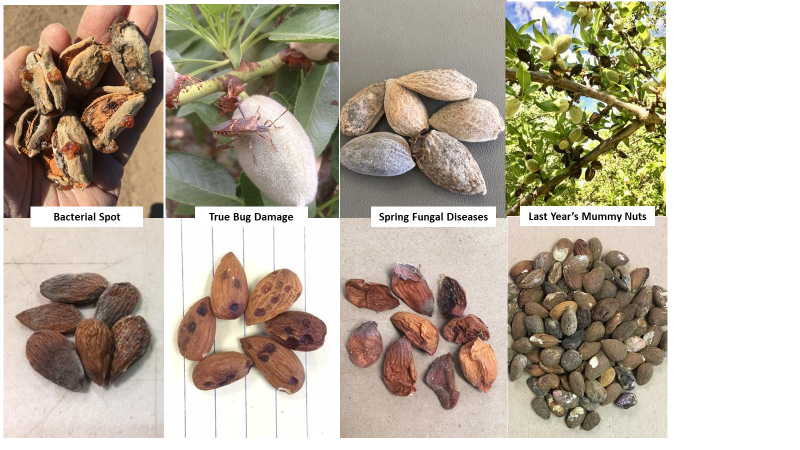
Historically, when a grower reviewed their almond grade sheet, it was assumed that the column citing “percent rejects” was largely insect damage, namely navel orangeworm (NOW) or Peach Twig Borer with occasional ant damage. While this is still generally true, there has been a shift in many areas to where most of the damage is related to other causes. In some cases, 100% of the damage may be things other than worm damage.
Sanitation is Dwindling
In spite of all the Almond Board funded research documenting the benefits of winter mummy nut sanitation as the first line of defense in NOW control, each year more growers are opting not to winter shake. The reasons vary from cost, availability of labor or equipment, or accessibility of the ground following winter rains. As a result, many orchards are forgoing winter nut sanitation. A survey in 2019 of 452 orchards in Stanislaus, San Joaquin and Merced counties showed that 293 of the 452 orchards (64.8%) were not winter sanitized as of the end of January.
This disturbing trend has more ramifications than just potential worm damage for the following season. A key type of damage is becoming a more significant factor in the USDA reject grade when winter mummy nuts are not removed and destroyed. This is the year-old rancid, moldy and darkened nuts that remained from last year, getting mingled in with the current crop during harvest. This is reflected in the “rejects” column, but is not insect damage. Thus, the argument that “I spray for worms” or “I don’t have worm damage so I don’t need to winter sanitize mummies” may still result in high rejects. It is not uncommon to see orchards with 50 to 200 mummies per tree the following season. This is particularly an issue with Butte/Padre blocks. Butte/Padre lots have been seen with high reject levels where all the damage is “last year’s nuts” and there is zero insect damage.
Non-Insect Damage
Other types of non-NOW damage are also becoming more of an issue in the reject numbers. The “Brown Spot” damage from either Leaf-footed (LFB) or Brown Marmorated Stink Bug (BMSB) damage has been, on occasion, the exclusive cause of rejects in some lots.
Another non-insect trend that is showing up as rejects is an increase in gummy, moldy or darkened kernels caused by springtime bacterial or fungal nut infections. Bacterial Spot in Fritz and Independence or fungi such as Anthracnose or Phomopsis on many varieties is becoming more significant in reject numbers each year.
Some growers are frustrated with high reject levels in spite of what appears to be excellent worm sprays and timings. In these situations, it is important to distinguish the causes of these rejects, since in some cases their origin may not be insect-related or may even be abiotic.
Though some of the causes of defective kernels may be difficult to control, identifying their origin and treating accordingly will reduce rejects. Copper and mancozeb fungicides as well as some bactericides, biopesticides and phosphites have activity against Bacterial Spot, though most only show moderate efficacy. Sprays for LFB or BMSB are effective, but the greatest difficulty is monitoring for presence and activity. There are fungicides effective on Anthracnose in the spring, but other miscellaneous spring fungi that may include Phomopsis or Botryosphaeria infections are more difficult to predict and/or control. The previous year’s mummy nuts are the easiest reject to reduce and can be eliminated by winter shaking and mowing the overwintering black mummy nuts.











